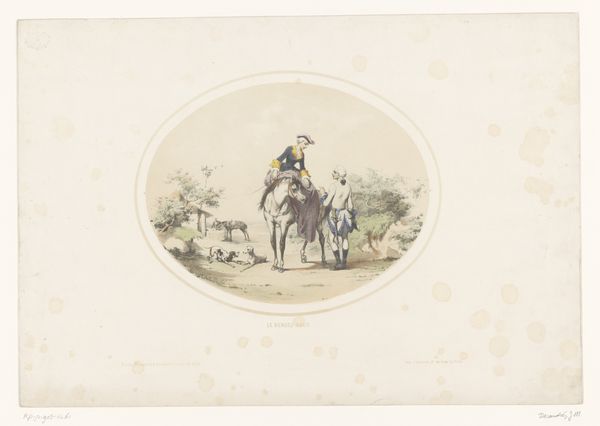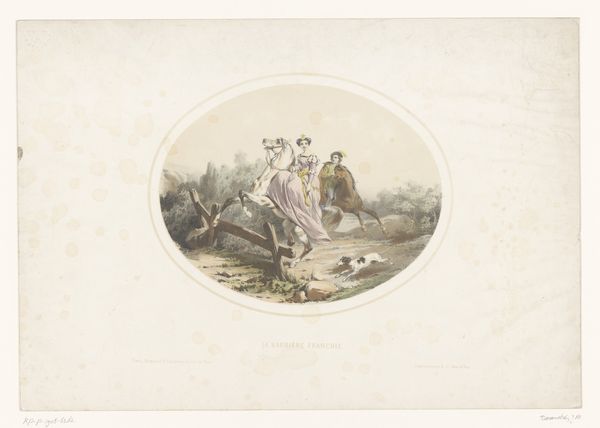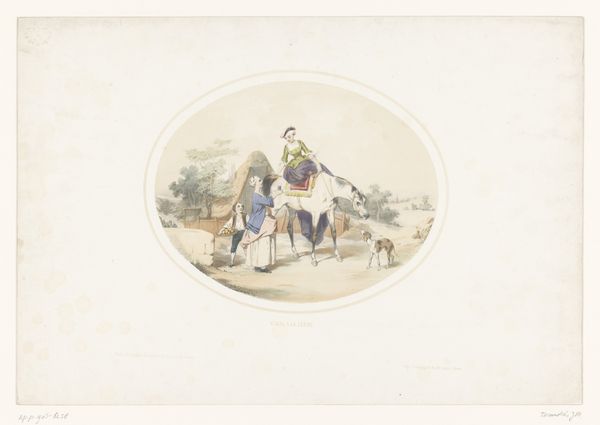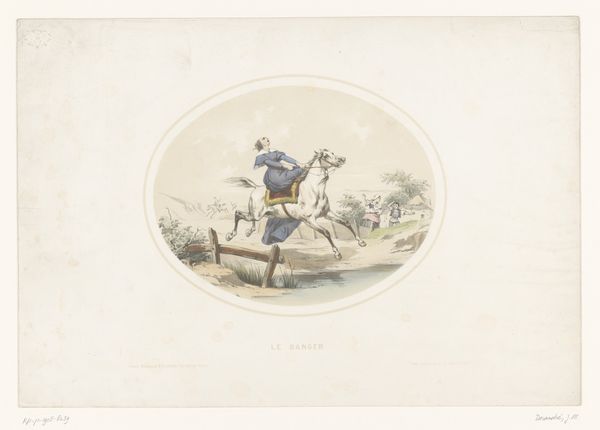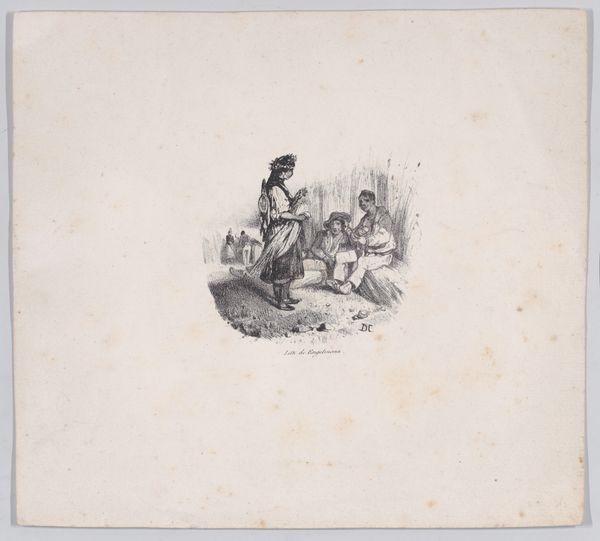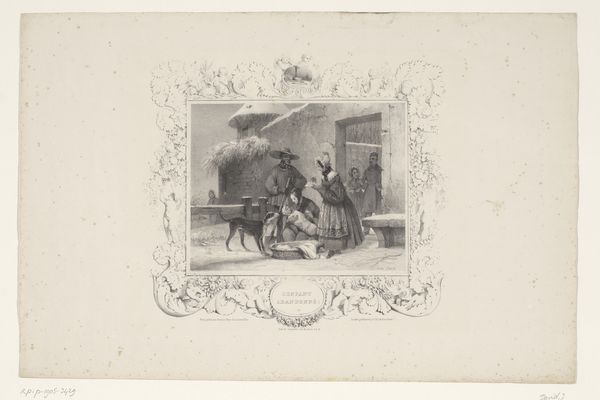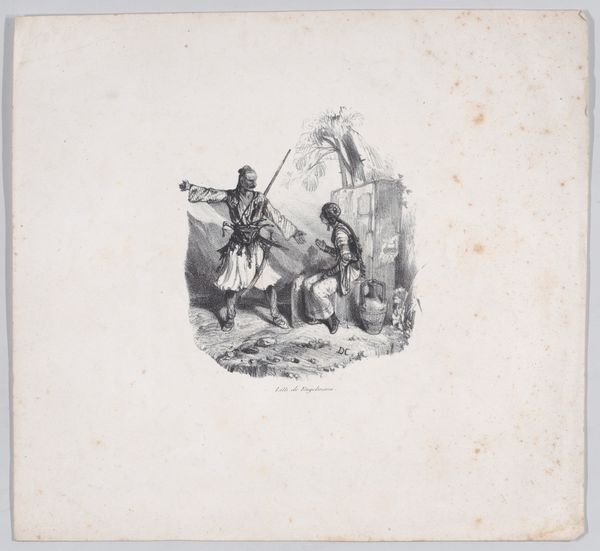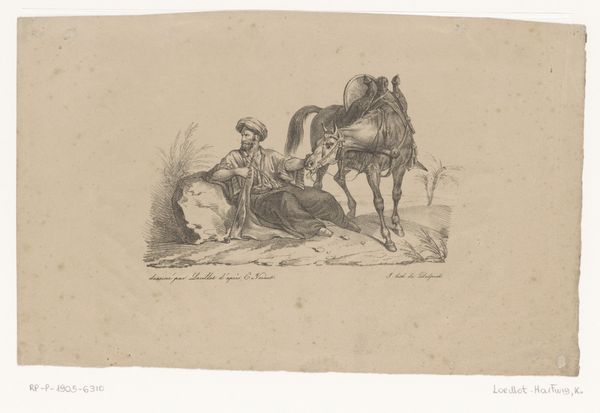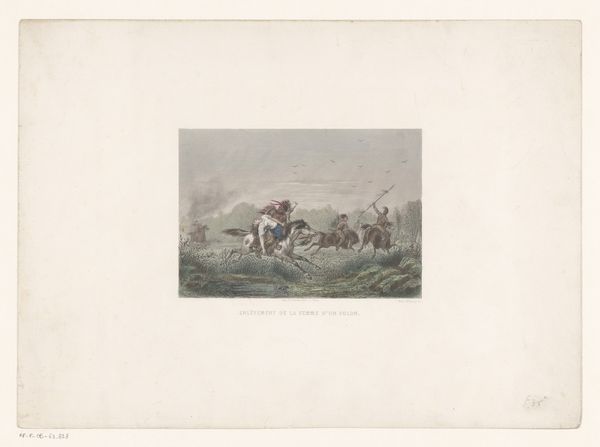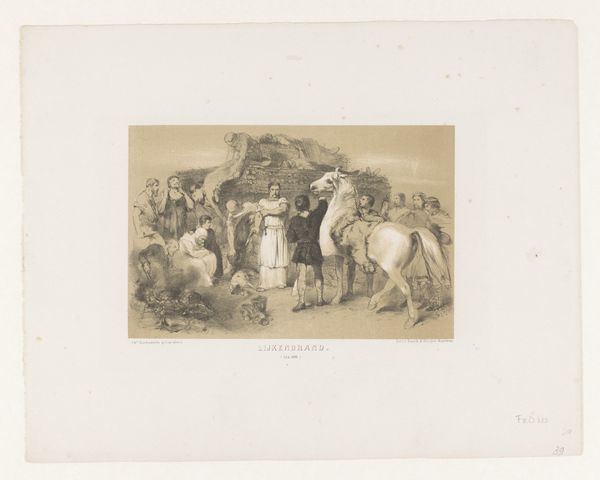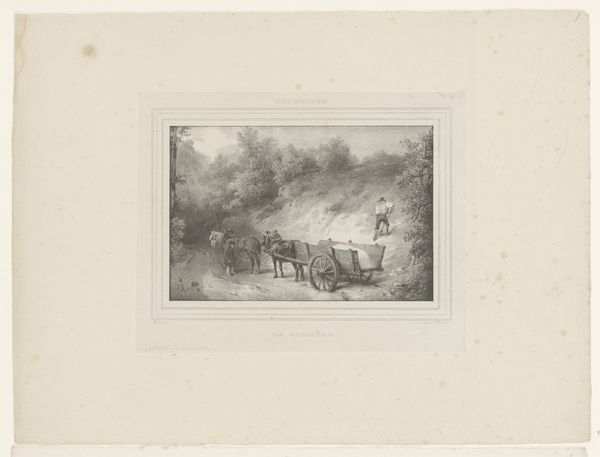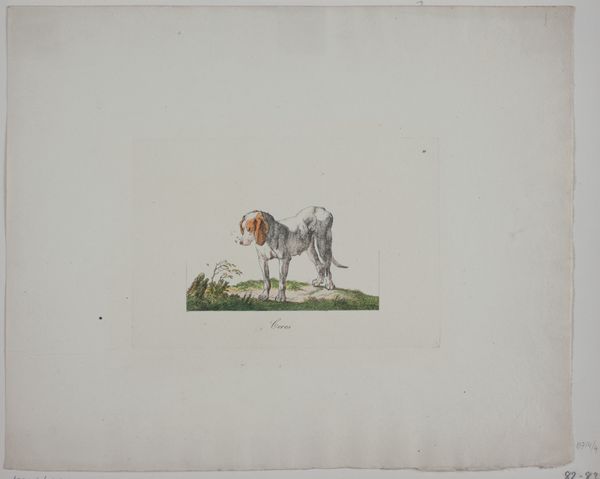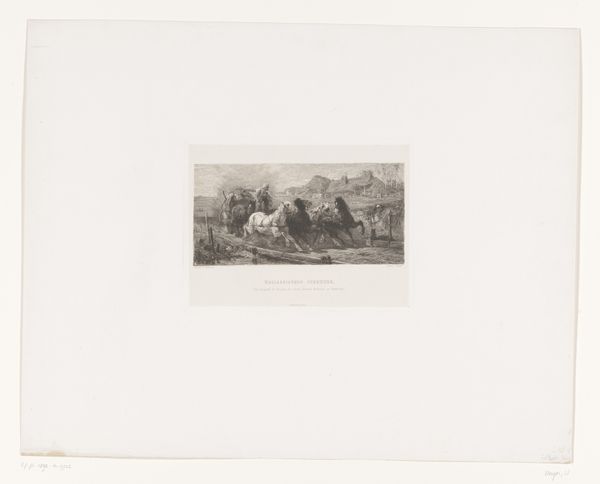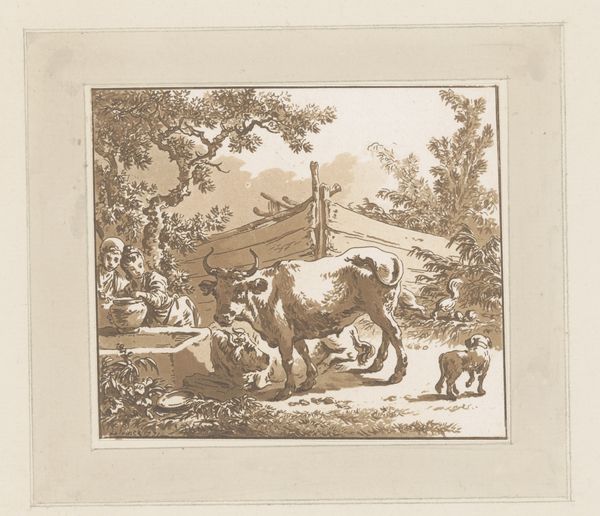
Dimensions: height 308 mm, width 442 mm
Copyright: Rijks Museum: Open Domain
Curator: My first impression is one of wistful nostalgia, perhaps a longing for a bygone era of leisure and privilege. Editor: Indeed. This watercolor, attributed to Jules Marie Desandré, created sometime between 1840 and 1870, encapsulates a romantic vision of aristocratic life. The piece is called "Edelvrouw met valk te paard," or "Noblewoman with falcon on horseback." Curator: The power dynamics are fascinating, aren't they? We see the elegant lady holding her falcon aloft, while a servant walks alongside her horse, restraining the dogs. It presents such a clear hierarchy of class and gender roles. What kind of statement could the artist be making? Editor: It reflects the era's fascination with idealized portrayals of nobility, very conscious of promoting social structures, rather than critique. The Romantic movement often looked to the past for inspiration, focusing on idealized representations. In this painting we can explore its role in reaffirming conservative social values through its imagery. The prominent placement of the Chateau suggests an image of order. Curator: It is fascinating to note how it is framed. Is there any commentary being made with it being in an oval setting as opposed to a square? Or a statement for this portrait-like watercolor piece? Editor: The oval framing gives it that preciousness you often find with portrait miniatures. These intimate framed depictions of nobles gave a false narrative as life was being displayed by artists for their elite owners in an intimate way to give the feeling that there was a personal interaction between noble and painting. But back to subject matter, do you think we could delve into the significance of her hunting falcon in relation to that idea of social stature? Curator: It's a potent symbol. Falconry was historically associated with wealth, power, and aristocratic privilege, as you stated. The bird symbolizes her elevated status and mastery over both nature and the social order. In an intersectional context, we might examine the ethics of this power, asking whether this representation glorifies exploitation. Editor: It also demonstrates control that extends over natural spaces which also impacts indigenous populations often, by placing control on areas through gentry and their practices. The landscape becomes another signifier for a specific social group. How do you think an artwork like this informs our view on modern hunting and conservancy? Curator: It forces us to interrogate the underlying values of what is being depicted. Does hunting reinforce exclusionary power dynamics, or can it be reimagined to deconstruct systems that continue oppressing already downtrodden people through their homelands being threatened and erased? We can trace such images of dominance over natural space across the board to interrogate its cultural presence as being synonymous with an elevated, moral or justifiable power. Editor: Ultimately, reflecting on a seemingly straightforward painting offers an entry point to broader discussions about art, politics, and power, particularly the representation of aristocracy.
Comments
No comments
Be the first to comment and join the conversation on the ultimate creative platform.
